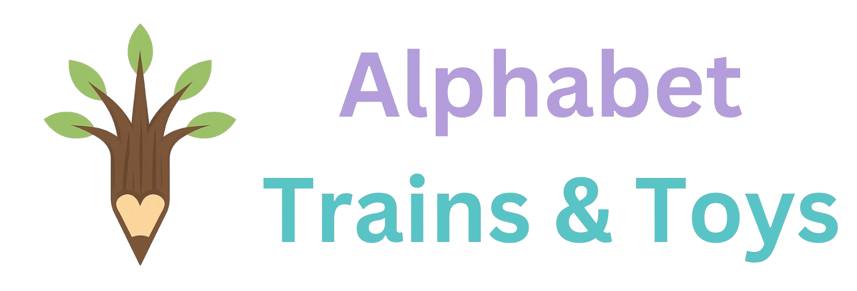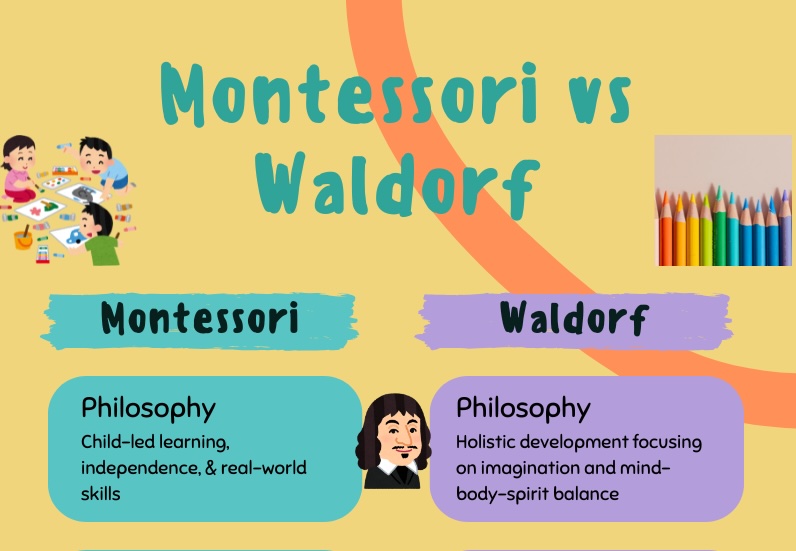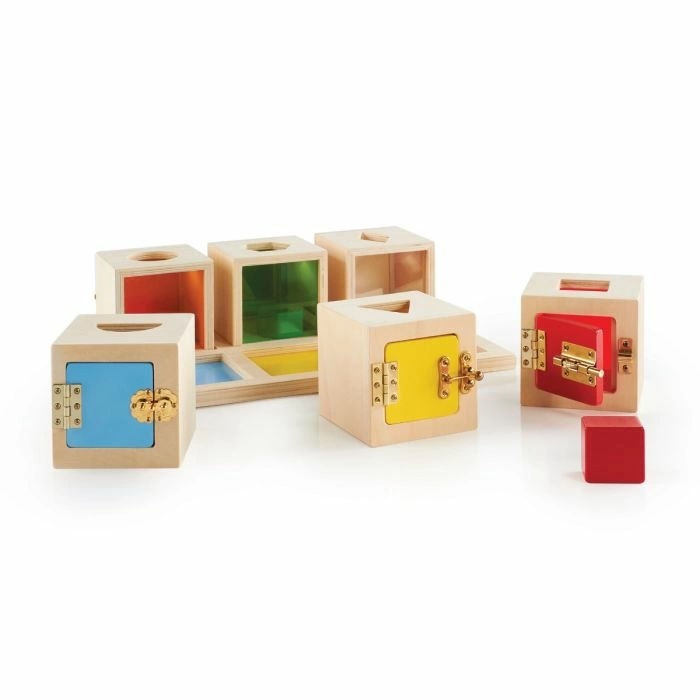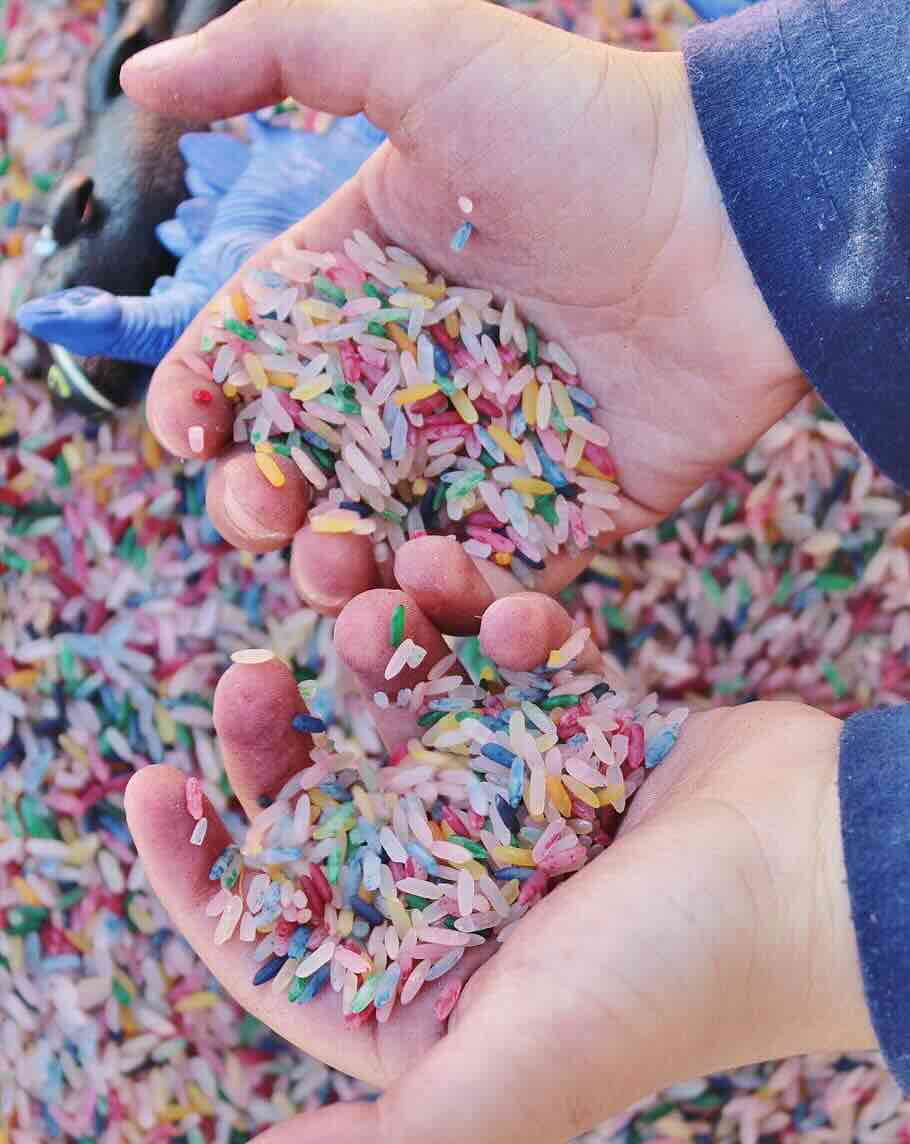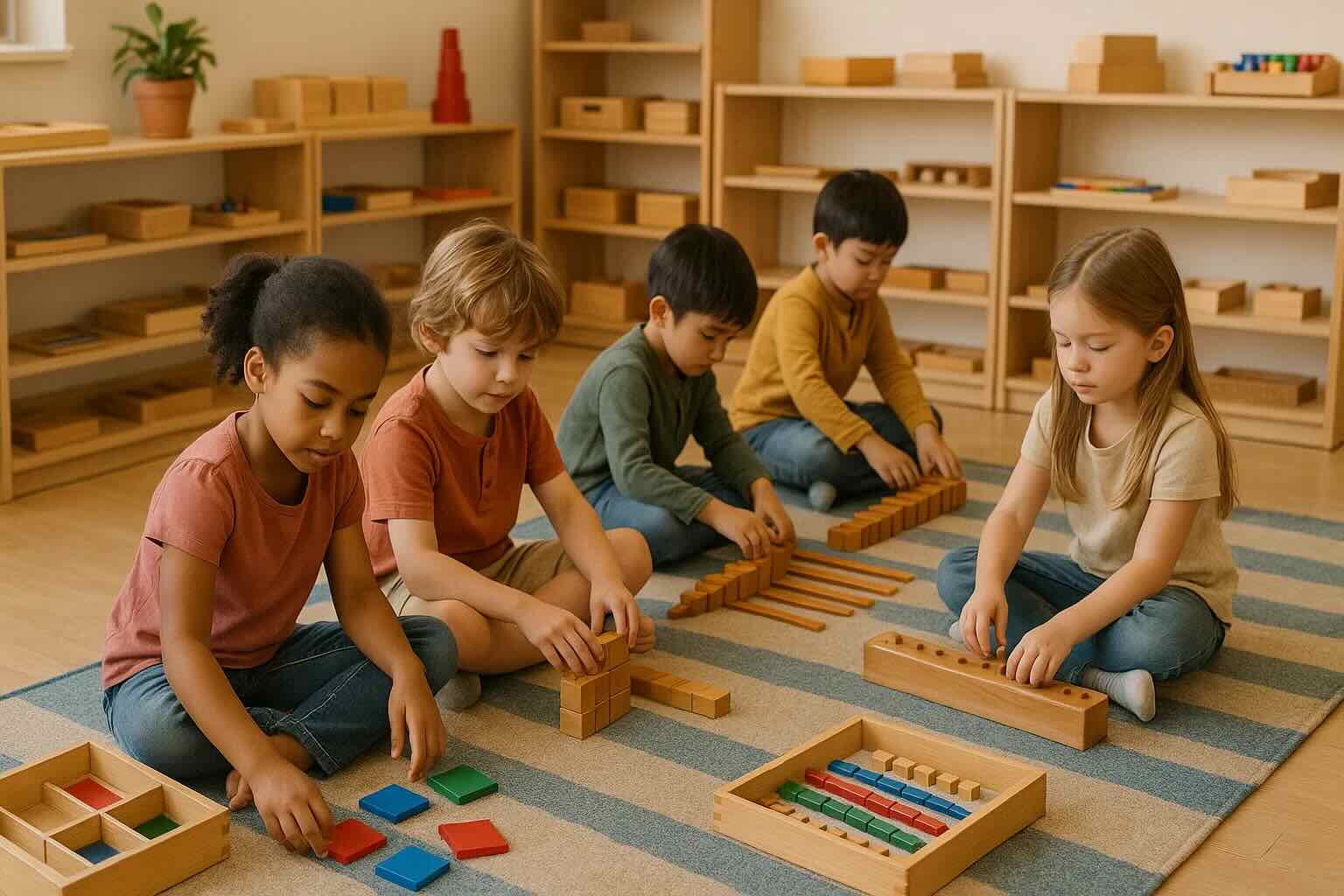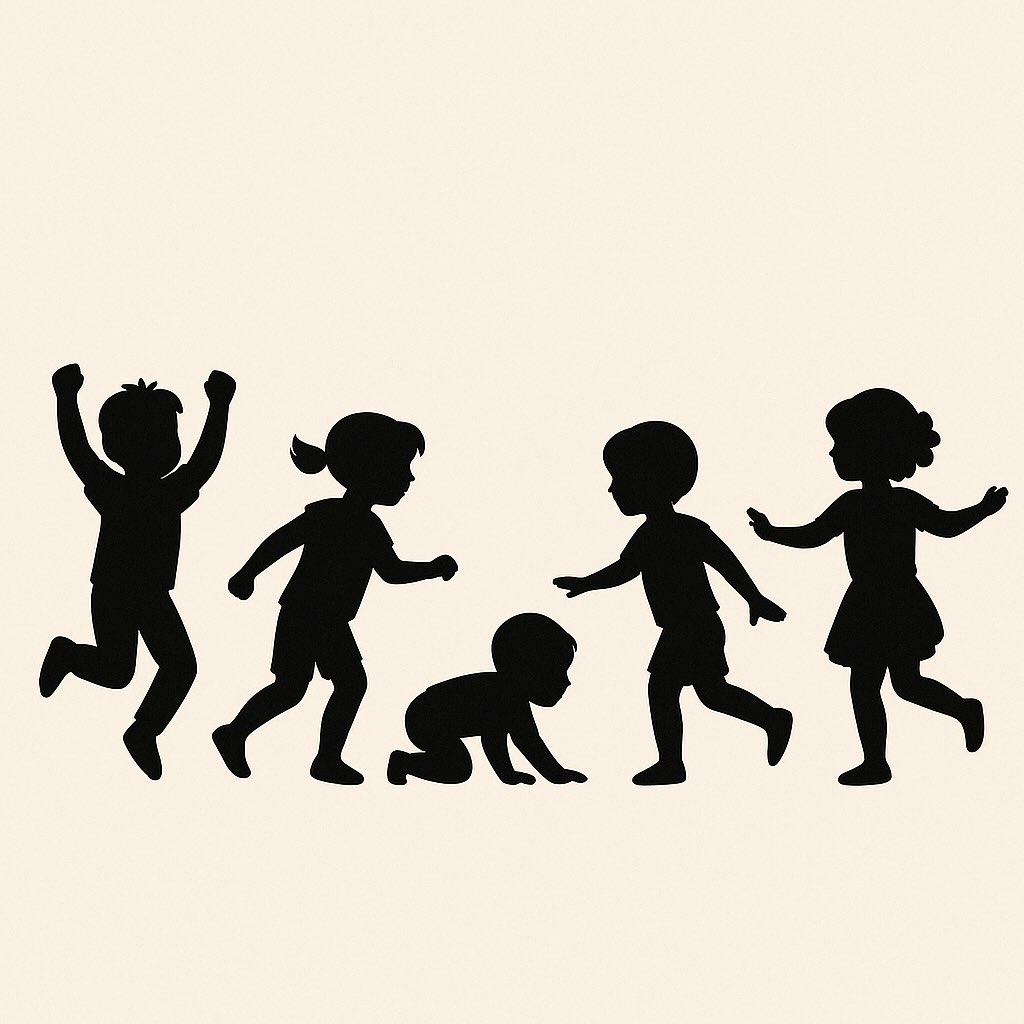Parents always want the best for their children, including choosing the right educational path. Are you stuck between Montessori vs. Waldorf? I get it - I was once in your shoes as a mother looking for the perfect preschool, and the many educational choices felt overwhelming.
Here's what you need to know upfront: Montessori emphasizes independence, practical skills, and self-paced learning in a structured environment. Waldorf focuses on imagination, delayed academics, and nurturing the whole child through rhythm and storytelling.
This Montessori vs Waldorf comparison guide will help you decide which method best fits your child's learning style and developmental needs. For a complete overview of the Montessori philosophy, explore our What is Montessori Education guide.
⚡ Quick Answer: Montessori vs Waldorf
Choose Montessori If:
- Your child likes structure and routine
- They enjoy working independently
- You value practical life skills
- You want early academics
Choose Waldorf If:
- Your child is highly imaginative
- They love creative play and stories
- You want to delay academics
- You prefer minimal technology
Not sure? Take our 3-question quiz below to find out which approach fits your child.
❓ Which Education Style Fits Your Child?
Take this quick quiz to discover whether Montessori or Waldorf might be a better fit for your child's personality and learning style.
Quick Comparison: Montessori vs Waldorf at a Glance
| Aspect | Montessori | Waldorf |
| Philosophy | Self-directed exploration and independence | Holistic development through creative activities |
| Curriculum | Flexible, personalized using hands-on materials | Structured by developmental stages with creative subjects |
| Classroom Environment | Organized, calm, accessible educational tools | Warm, homelike, natural spaces with minimal technology |
| Materials Used | Specially designed tools for hands-on learning | Natural materials for arts and imaginative play |
| Use of Technology | Thoughtfully introduced | Avoided until high school |
| Academic Approach | Introduces early academics through practical tasks | Delayed until age seven, focuses on play initially |
| Teacher's Role | Facilitator of independent learning | Guide for experiential, imaginative group activities |
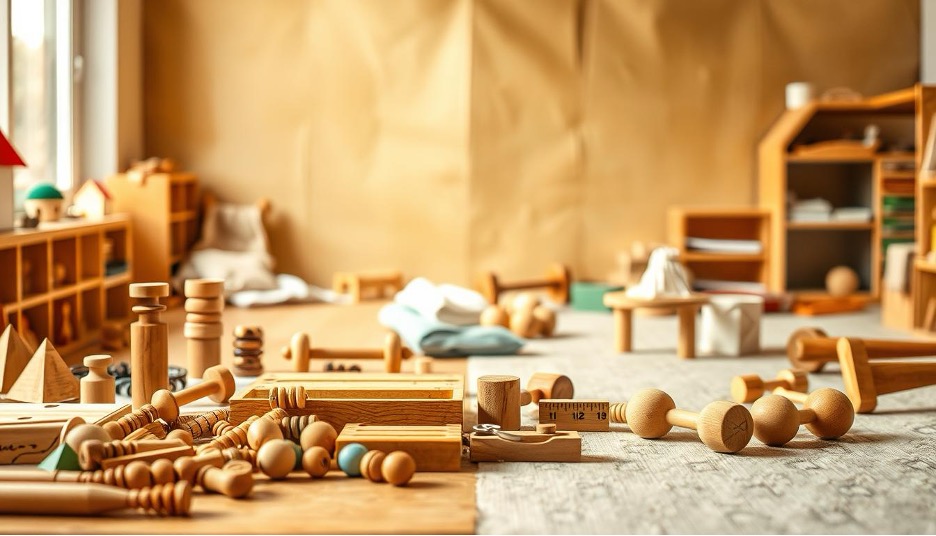
Origins and Founders
Montessori education started in early 1900s Italy with Dr. Maria Montessori, one of Italy's first female physicians. She discovered that children learn best when free to explore at their own pace. Today, there are approximately 15,000 Montessori schools worldwide teaching her methods.
Rudolf Steiner began Waldorf education in early 20th-century Austria. A philosopher and educator, he believed in growing the whole person - mind, body, and spirit. His approach valued imagination and creativity above early academics. There are now about 1,100 Waldorf schools and 2,000 kindergartens globally.
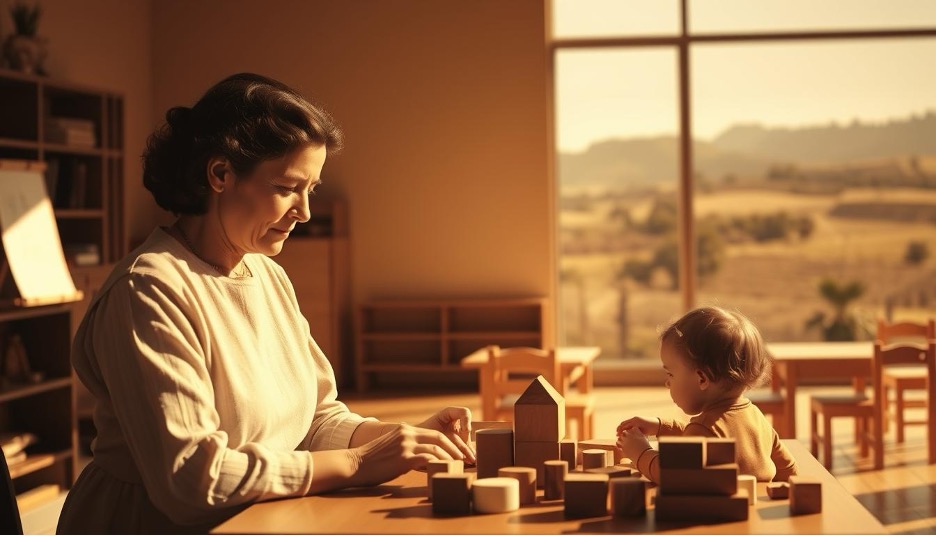
The Principles of Montessori Education
Montessori education focuses on children and their own pace of learning, often supported by thoughtfully chosen Montessori toys that support independent learning. It emphasizes child-led learning, freedom within limits, and respect for each child's unique development. This method helps children become independent and disciplined through specific environments and tools.
Individualized Learning
In Montessori schools, each child's unique needs and ways of learning are respected. This allows each student to learn at their own speed, helping them become independent and eager to learn. Teachers act as guides, supporting while letting kids explore on their own.
Prepared Environment
The prepared environment is key to Montessori principles. Classrooms are set up with special materials that invite kids to explore and learn by themselves. The room's layout, decorations, and materials make it a calming and focused space for growth, often including functional kids rugs for organizing learning areas.
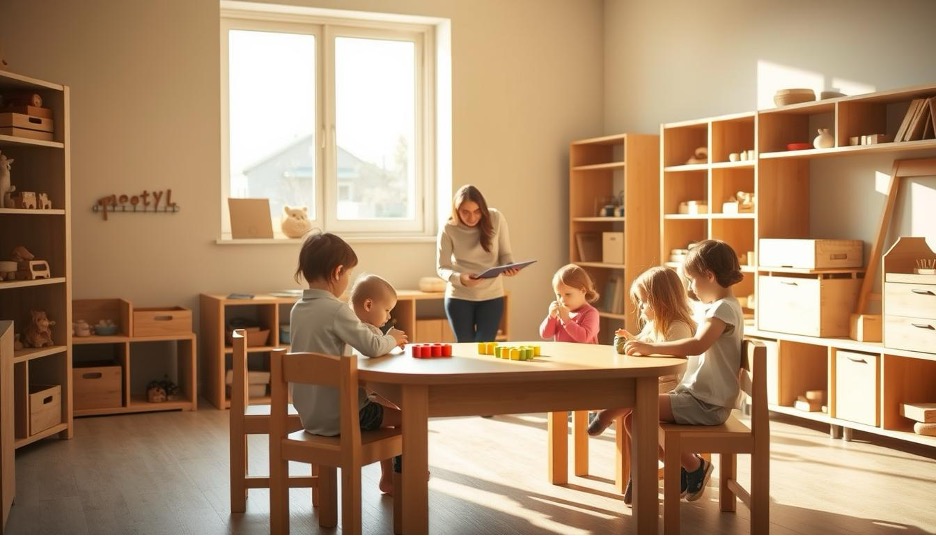
Practical Life Skills
Teaching practical life skills is very important in Montessori education. These skills help kids be independent and confident in daily life. They learn everything from self-care to doing chores, which teaches them to be responsible and care for their surroundings.
Sensory Exploration
Sensory activities are a big part of the Montessori approach. Kids use special materials to learn with all their senses. This method boosts thinking and movement skills and makes kids more aware of their senses.
The Core Tenets of Waldorf Education
Waldorf education aims to develop the whole child using an integrated approach that connects kids to the world. The Waldorf philosophy, developed by Rudolf Steiner, is rooted in anthroposophy—a belief that education should nurture the physical, emotional, and spiritual aspects of a child through imagination, rhythm, and artistic expression.
Holistic Development
Waldorf education focuses on the growth of mind, body, and spirit together. It meets children's needs at every phase, creating a well-rounded learning experience. Teachers guide children, adapting the environment to their growing needs while building strong social bonds.
Play and Imagination
Imaginative play is key in Waldorf education. It's vital for a child's thinking and emotional growth. Until they're seven, kids learn mostly through play. After that, they move on to more traditional schoolwork.
Delayed Academics
Waldorf schools start academic teaching later, at age seven. This gives kids time to develop through play and hands-on activities. The curriculum then brings in subjects like math and science in a way that's right for their age, balancing brain power and emotional understanding.
Artistic Expression
Art plays a central role in Waldorf schooling. Artistic activities are woven into other subjects, helping students connect deeply with what they're learning. Waldorf students often engage in watercolor painting, storytelling, and music as part of their daily rhythm, helping cultivate imagination and emotional growth.
Montessori and Waldorf Schools at a Glance
This side-by-side infographic highlights key differences in philosophy, classroom layout, teaching approach, and more. Review the visual for a quick, digestible summary.
By combining academic rigor with either independence or imagination, each model helps children grow in unique ways. Choose what fits your child's learning style best.
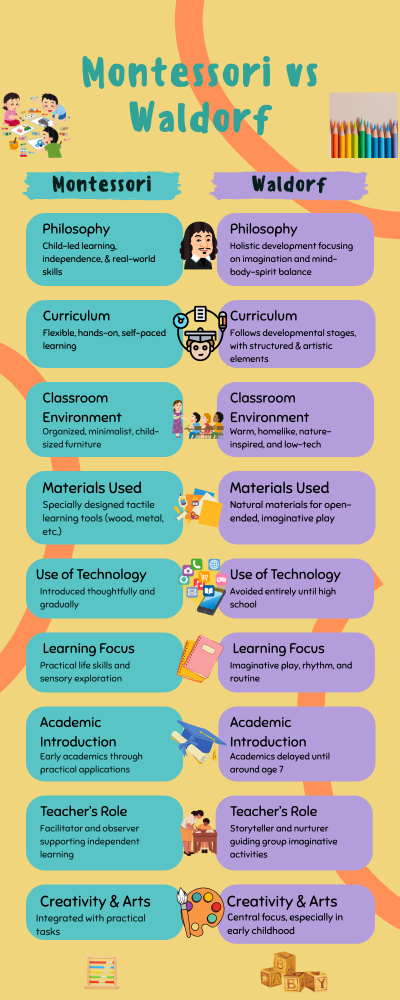
The Honest Truth: What Each Method Gets Criticized For
Let's be real - no educational approach is perfect. Here's what parents often worry about with each method:
Waldorf Considerations:
- Delayed academics: Reading and math don't start until age 7, which can feel late if you're used to traditional schooling
- Heavy fantasy focus: All that imaginative play might not suit children who are more analytical or fact-focused
- Technology limits: Schools ask you to limit screens at home too, which can be tough in today's world
- Spiritual elements: Some Waldorf schools incorporate elements that feel spiritual or religious to some families
- Non-standard curriculum: Your child might be learning about gnomes and fairies when their cousins are learning phonics
Montessori Considerations:
- Requires self-direction: Some children need more guidance than the Montessori "follow the child" approach provides
- Can feel too structured: All those organized shelves and "work cycles" might stifle highly imaginative, free-spirited kids
- Expensive: Private Montessori schools often come with private school price tags
- Less group play: The focus on individual work means less emphasis on collaborative, social play
- Mixed results in public settings: True Montessori requires specific training and materials that public "Montessori" programs sometimes lack
Bringing These Methods Home: Toys That Actually Support Each Approach
Here's the thing - you don't need to find a Montessori or Waldorf school to introduce these principles. You can start at home with the right tools and toys. Let me show you what that looks like.
If You're Leaning Toward Montessori:
Start with practical life tools that build independence. When I first started with Montessori at home, I was surprised how engaged my daughter became with "real" activities.
Perfect Starter Toy: Personalized Name Trains are textbook Montessori. Here's why - children learn their own name before any other word, and these trains let them physically manipulate those letters. The wooden construction, the self-correcting nature (letters only connect one way), the independent exploration - that's pure Maria Montessori.
I watched my nephew spend 45 minutes just connecting and reconnecting his name train. No screens, no prompting from adults, just focused concentration.
For Practical Life Skills: A Locks & Latches Board is what Montessori classrooms use for practical life practice. Kids work on real-world skills (opening doors, latches, locks) without needing you to hover.
For Organized Learning Spaces: Even something as simple as a personalized step stool embodies Montessori principles - it helps kids reach sinks and counters independently while incorporating their name for recognition practice.
If You're Drawn to Waldorf:
Focus on open-ended, natural materials that spark imagination without prescribing how they should be used.
Perfect Starter Toy: Simple wooden building blocks are wonderfully Waldorf. No instructions, no "correct" way to play, just natural wood and endless creative possibilities. They can be a castle today, a farm tomorrow, a spaceship next week.
The beauty of Waldorf toys is their simplicity. I've noticed that the fewer features a toy has, the more my kids actually play with it. Their imagination fills in the rest.
For Creative Expression: Our natural wood educational toys collection focuses on open-ended play that lets children's creativity lead.
Can't Decide Between Them?
You're not alone. Many families (mine included) blend both approaches. We follow Montessori's emphasis on independence and practical skills during weekday routines, but embrace Waldorf's imaginative play on weekends and during free time.
The good news? Toys like name trains work beautifully with either philosophy - they're Montessori in their letter-learning function but Waldorf in how they become part of imaginative train play.
Start with versatile, natural wood toys that support both methods, and see which approach resonates more with your family's rhythm.
My Honest Take: Which Should You Choose?
After researching both methods and watching them in action with my own kids and their friends, here's my straightforward recommendation:
Choose Montessori If:
- Your child is between 18 months-6 years (the sweet spot for Montessori)
- They respond well to routine and organized spaces
- You want them reading and doing math by kindergarten
- Your child likes to work independently and gets satisfaction from mastering tasks
- You value practical life skills as much as academics
Best for: Children who thrive with clear structure, love "doing it myself," and are ready for early academic concepts.
Choose Waldorf If:
- Your child is highly imaginative and story-driven
- You're comfortable waiting until age 7 for formal reading instruction
- Your family can commit to limiting technology and screens
- Your child needs time for fantasy play and creative expression
- You want education that feels magical and wonder-filled
Best for: Creative, dreamy children who need time to develop through play before diving into academics.
Can't Access Either Type of School?
Don't worry - you can practice both methods at home. Many families create "Montessori corners" with practical life activities and organized toy shelves, or set up Waldorf-inspired play spaces with natural materials and dress-up boxes.
Depending on where you live, proximity to a Montessori or Waldorf school may be an issue. If no specific school is available, you can still offer your child these learning experiences at home with the right educational toys and materials.
Start with the toys that match your chosen philosophy:
- For Montessori at home: Browse our Montessori toy collection organized by age and developmental stage
- For Waldorf at home: Focus on our natural, open-ended toys that spark imagination
The most important thing? Observe your child. They'll tell you what works through their engagement and joy. That's more valuable than any educational label.
Montessori Vs. Waldorf FAQ
What are the main differences between Montessori vs. Waldorf education?
Montessori focuses on learning tailored to each student. It values independence and learning through senses in a special setup. On the other hand, Waldorf highlights entire development and creative activities. It delays formal lessons to strengthen a bond with nature and arts.
What is the Waldorf philosophy?
Waldorf education, founded by Rudolf Steiner, is based on the belief that childhood development unfolds in stages and should be supported through rhythm, creativity, and hands-on artistic expression—rather than early academics or screens.
What is the philosophy behind Montessori education?
The Montessori method, created by Maria Montessori in the 1900s, builds on kids' natural desire to do things by themselves. It encourages learning at their own speed with hands-on experiences. This happens in structured places with special tools for academic and real-world skills.
How does Waldorf education approach learning?
Austrian philosopher Rudolf Steiner introduced Waldorf education in the early 20th century. It blends physical, emotional, and spiritual growth. Early learning comes from play and imagination. It promotes artistic activities and personal expression, aiming for complete growth.
How do Montessori and Waldorf classrooms differ?
Montessori rooms are set up for students to lead their learning with educational materials at their fingertips. This nurtures independence and life skills. Waldorf rooms keep it simple and imaginative. They use play and a caring environment for creativity and art skills.
What kind of skills does Montessori education develop?
Montessori boosts self-relying, problem-solving, and choosing what to learn. Kids gain life and sensory skills, moving at their own speed. They explore topics that interest them deeply.
What are the benefits of Waldorf education?
Waldorf deepens overall growth and feeds creative minds. It includes nature and arts in its lessons. This way, it shapes well-rounded people who really care about their surroundings.
How do Montessori and Waldorf schools integrate academics?
Montessori mixes academic studies with self-founded discovery and practical tasks. Waldorf waits before starting formal lessons. It uses play and the arts to grow a love for learning. Then, it introduces more regular classes.
Which approach—Montessori or Waldorf—might be better for my child?
Choosing between Montessori and Waldorf depends on what your child likes and needs. Think about if they'd do better in a planned place that supports self-reliance (Montessori) or in an imaginative, full-growth setting (Waldorf).
Look, here's what I've learned as a parent: neither method is perfect, and most of us end up blending approaches based on what works for our specific child. Some kids need Montessori's structure. Others need Waldorf's imagination time. Many need elements of both.
The best part? You can start experimenting today with simple toys and materials at home. Watch how your child plays, notice what engages them, and follow their lead. That's the real wisdom both Maria Montessori and Rudolf Steiner would agree on - the child knows what they need.
Ready to Start Your Child's Learning Journey?
Whether you choose Montessori, Waldorf, or a blend of both, we've got toys that support your approach.
